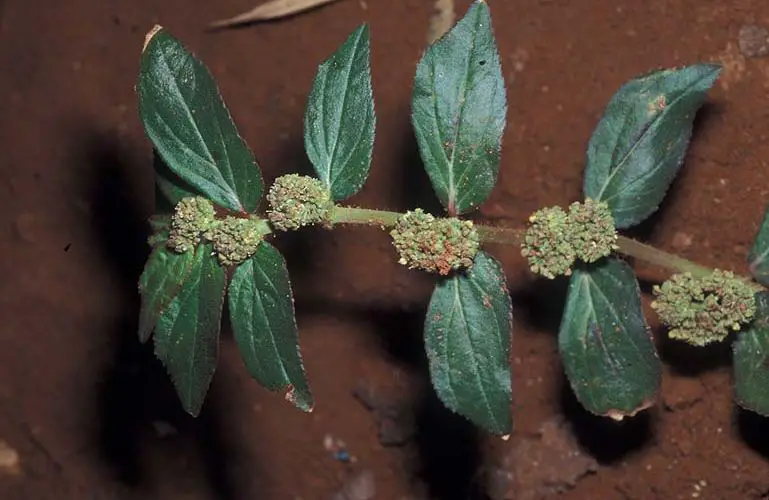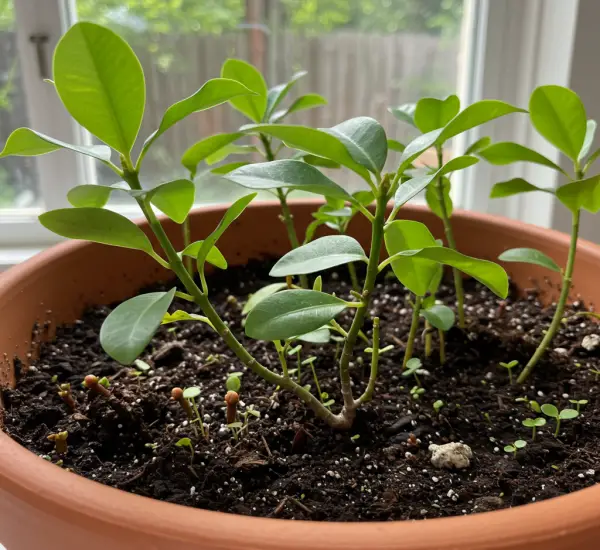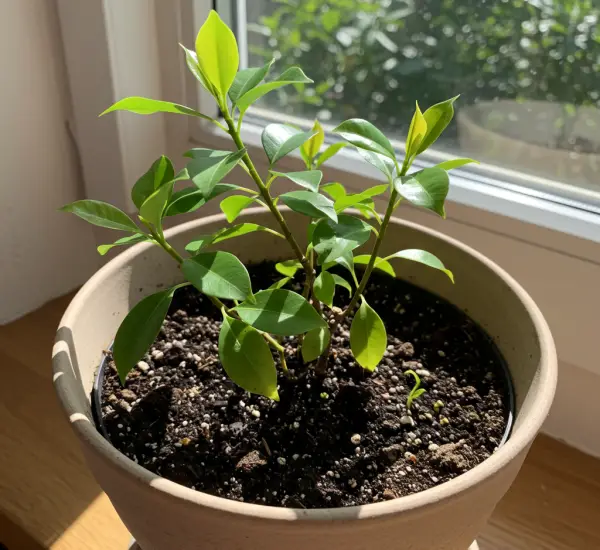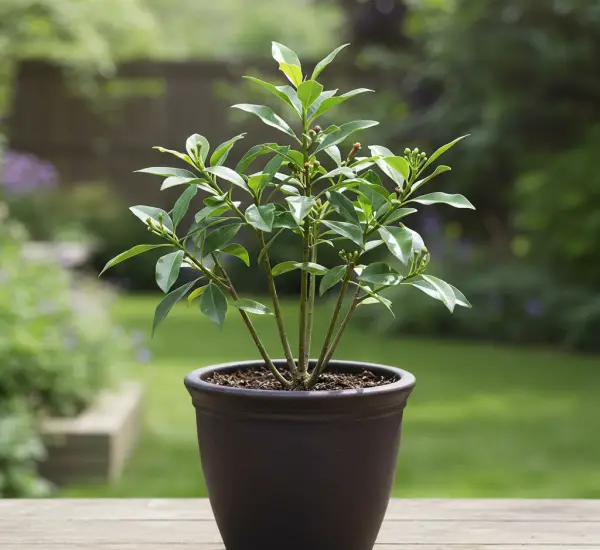Euphorbia hirta, commonly referred to as the asthma plant, is a herbaceous plant that has been widely recognized in traditional medicine across various cultures. With a long history of use for treating a range of health conditions, from respiratory issues to gastrointestinal problems, Euphorbia hirta remains a valuable natural remedy. In this article, we’ll explore the plant’s diverse traditional applications, methods of use, and the scientific background supporting its purported health benefits.
1. Respiratory Benefits
Euphorbia hirta is most commonly known for its ability to alleviate respiratory conditions, particularly asthma, bronchitis, and persistent coughs. In traditional medicine, the leaves of this plant are often brewed into a tea or decoction and consumed to help ease breathing difficulties. It is believed that the plant possesses bronchodilatory properties, which means it helps relax the bronchial muscles, making it easier for asthmatic patients to breathe. This makes it a valuable option in places where modern asthma medications may not be readily available.
2. Gastrointestinal Uses
In the realm of gastrointestinal health, Euphorbia hirta is reputed for its antidiarrheal and anti-inflammatory properties. In traditional practices, a decoction made from the leaves of the plant is often used to treat diarrhea and dysentery. Its ability to calm gastrointestinal spasms has also made it useful in managing symptoms of irritable bowel syndrome (IBS). The plant’s effectiveness in soothing the digestive system is one of its primary traditional uses, especially in regions where gastrointestinal infections are common.
3. Dermatological Applications
Euphorbia hirta has significant topical applications in traditional medicine, particularly in treating various skin conditions. It is often applied as a paste or infusion to treat warts, boils, rashes, and wounds. The plant is believed to have antimicrobial and anti-inflammatory properties that make it an effective natural remedy for skin irritations and infections. Some traditional practitioners even use Euphorbia hirta as a wound-healing agent, thanks to its potential ability to reduce inflammation and prevent infection.
4. Antimicrobial Effects
One of the key reasons for Euphorbia hirta’s extensive use in traditional medicine is its broad-spectrum antimicrobial properties. The plant has been traditionally used to combat bacterial, fungal, and even viral infections. While scientific research into its antimicrobial potential is still emerging, early studies suggest that the plant may have substances that can inhibit the growth of various pathogens. This makes it a candidate for both internal and external use in treating infections.
5. Pain Relief and Anti-inflammatory Effects
Euphorbia hirta is also known for its analgesic (pain-relieving) and anti-inflammatory properties. These benefits make it a useful remedy for managing pain and inflammation associated with conditions like arthritis, muscle strains, and headaches. Traditionally, the leaves are brewed into a tea or applied topically as a poultice to relieve pain. The plant’s ability to reduce inflammation and provide relief from discomfort is one of the reasons it continues to be valued in herbal medicine.
6. Antipyretic (Fever-Reducing) Properties
Euphorbia hirta has been used for centuries to reduce fever, a common symptom in many illnesses. The leaves of the plant are often brewed into a tea and consumed to lower body temperature during feverish conditions. The cooling effect of this herbal tea is believed to help manage fevers, making Euphorbia hirta a go-to remedy in regions where conventional antipyretic medications may not be available. However, while traditional use suggests its effectiveness, more scientific studies are required to fully confirm this benefit.
7. Treatment of Urinary Tract Disorders
In many traditional medicine systems, Euphorbia hirta is also used to treat urinary tract infections (UTIs) and bladder inflammation. The plant is believed to have diuretic properties, which promote urine production and flow, helping to flush out infections from the urinary tract. A decoction or tea made from the leaves is typically consumed to alleviate these symptoms. Though its traditional use in treating UTIs is well-documented, more research is needed to provide concrete scientific evidence of its efficacy.
8. Antioxidant Properties
In recent years, the antioxidant potential of Euphorbia hirta has garnered significant interest. Antioxidants are known to combat oxidative stress, a condition linked to the development of chronic diseases such as heart disease, cancer, and diabetes. By neutralizing harmful free radicals, Euphorbia hirta may help protect the body from cellular damage. Consuming the plant in the form of tea or a supplement may offer a natural way to boost your body’s antioxidant defenses.
9. Wound Healing and Skin Repair
Euphorbia hirta has been traditionally applied topically to aid in wound healing and promote skin repair. The plant’s antimicrobial and anti-inflammatory properties make it useful for treating cuts, sores, and insect bites. In many cultures, a paste made from the crushed leaves is applied directly to the wound to promote faster healing and prevent infection. Its effectiveness as a wound healer, although widely recognized in traditional medicine, still requires more clinical validation through modern scientific studies.
10. Control of Blood Sugar Levels
In some traditional systems, Euphorbia hirta has been used to manage blood sugar levels. Though scientific research is still limited in this area, some studies suggest that the plant may have potential in regulating glucose metabolism. This could make it a beneficial supplement for people with diabetes or those looking to maintain healthy blood sugar levels. However, it’s crucial for individuals with diabetes to consult healthcare professionals before incorporating Euphorbia hirta into their regimen.
11. Boosts Immunity
Euphorbia hirta is believed to boost the immune system by supporting the body’s natural defenses. Its antimicrobial properties may help fend off infections, while its potential antioxidant effects could strengthen the body’s overall resilience. Traditionally, the plant has been consumed as a tea or decoction to help improve general health and protect against common illnesses.
12. Relieves Muscle Spasms
Euphorbia hirta has been traditionally used to relieve muscle spasms and cramps, particularly in gastrointestinal conditions like IBS or dysentery. The plant’s antispasmodic properties help relax muscles, making it a valuable remedy for alleviating painful spasms. Whether used internally as a tea or externally as a poultice, Euphorbia hirta offers a natural way to ease muscle tension.
13. Preparation and Usage
The most common way to use Euphorbia hirta is by brewing the leaves into a tea or decoction. This method is ideal for treating internal conditions such as respiratory issues, digestive problems, or urinary tract disorders. To prepare a tea, boil fresh or dried leaves in water for a few minutes, then strain and drink. For topical applications, the leaves can be ground into a paste and applied to the skin to treat wounds, rashes, or infections.
Safety and Precautions
While Euphorbia hirta has a long history of traditional use, it’s essential to exercise caution when using this plant. Certain parts of the plant may be toxic if consumed in excessive amounts, and there is a risk of side effects or interactions with other medications. It is always advisable to consult with a healthcare professional before using Euphorbia hirta, particularly for pregnant or breastfeeding women, or individuals with pre-existing health conditions.



